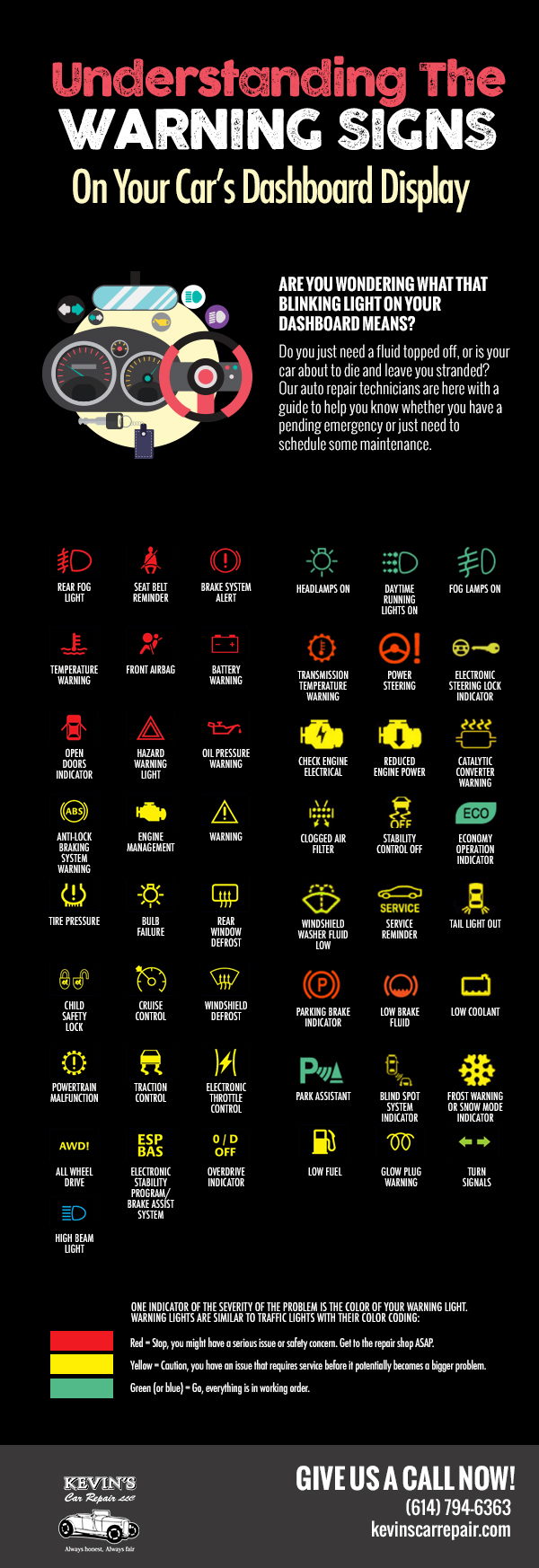Translating Your Automobile'S Caution Indicators: What They Genuinely Signify
Translating Your Automobile'S Caution Indicators: What They Genuinely Signify
Blog Article
Write-Up By-Higgins Dalgaard
When you lag the wheel, those glowing warning lights on your control panel can be a little bit bewildering. Do you recognize what they're attempting to tell you about your auto's wellness? Recognizing the relevance of these lights is vital for your safety and the durability of your car. So, the following time one of those lights pops up, would not you intend to decipher its message properly and take the needed steps to address it?
Common Warning Lights and Interpretations
Identify common warning lights in your vehicle and comprehend their meanings to make sure risk-free driving.
grooming cars of the most typical caution lights include the check engine light, which signifies problems with the engine or discharges system. If car wax companies begins, it's critical to have your lorry examined without delay.
The oil stress alerting light suggests reduced oil stress, requiring prompt focus to prevent engine damages.
A blinking battery light might suggest a damaged billing system, possibly leaving you stranded if not resolved.
The tire pressure monitoring system (TPMS) light alerts you to low tire stress, influencing car stability and fuel effectiveness. Disregarding this can bring about hazardous driving conditions.
The abdominal muscle light indicates a trouble with the anti-lock braking system, endangering your capability to quit promptly in emergency situations.
Last but not least, the coolant temperature level cautioning light warns of engine overheating, which can result in extreme damage if not settled promptly.
Understanding these common warning lights will aid you deal with concerns quickly and preserve risk-free driving conditions.
Value of Prompt Interest
Recognizing the typical caution lights in your auto is only the initial step; the value of quickly resolving these warnings can't be stressed enough to guarantee your safety on the road.
When a caution light illuminates on your dashboard, it's your auto's way of communicating a prospective concern that needs interest. Ignoring these warnings can lead to much more serious issues in the future, jeopardizing your safety and security and possibly costing you extra in repairs.
Trigger interest to advising lights can avoid failures and mishaps. For example, a flashing check engine light might indicate a misfire that, if left ignored, can create damage to the catalytic converter. Addressing this promptly can conserve you from an expensive repair.
Similarly, a brake system cautioning light might indicate reduced brake fluid or worn brake pads, essential elements for your safety when driving.
Do It Yourself Troubleshooting Tips
If you see a caution light on your control panel, there are a couple of DIY troubleshooting ideas you can attempt before looking for expert help.
The first step is to consult your cars and truck's manual to comprehend what the details caution light indicates. Occasionally the concern can be as easy as a loose gas cap setting off the check engine light. Tightening the gas cap might settle the issue.
One more common issue is a low battery, which can cause various warning lights. Checking the battery connections for rust and guaranteeing they're secure may fix the issue.
If a caution light lingers, you can try resetting it by separating the vehicle's battery for a few minutes and then reconnecting it. Furthermore, inspecting your car's liquid degrees, such as oil, coolant, and brake liquid, can help troubleshoot alerting lights associated with these systems.
Conclusion
In conclusion, understanding your car's warning lights is vital for maintaining your car running efficiently and safely. By promptly resolving under car steam cleaning near me and recognizing what they imply, you can stay clear of costly fixings and possible break downs.
Keep in mind to consult your vehicle's manual for particular details on each warning light and do something about it appropriately to make certain a trouble-free driving experience.
Stay educated, remain secure when driving!
